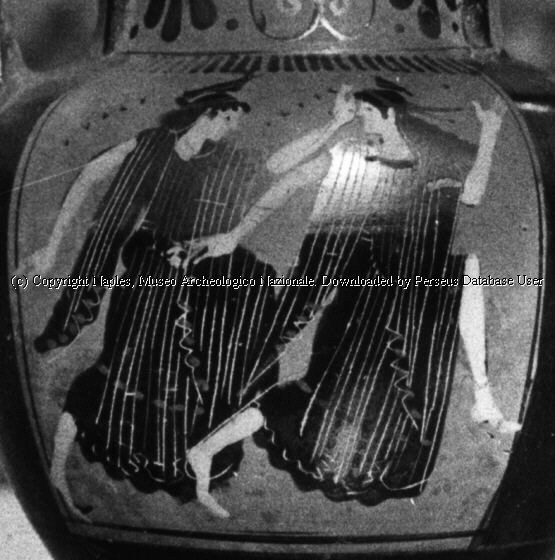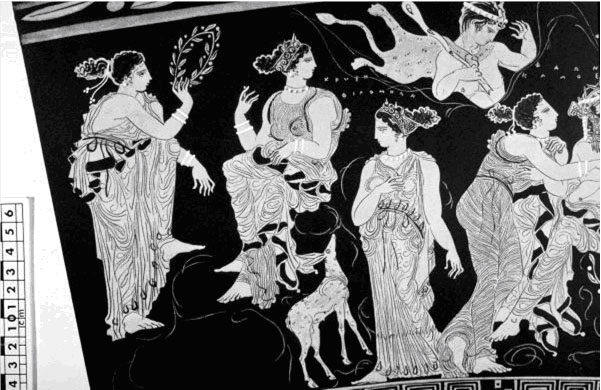
Modern interpretations of the ancient myths
Also includes analysis of three modern works and sources
Part 1: Section A
Different ancient versions of the myth of Philomela

Ovid's Metamorphosis as translated by Brookes More
In Ovid's tale Philomela is kidnapped and then raped by Tereus. He kept her in a "ramshackle building... [with] stone blocks around her cottage" to guard against her escape. Here, in this building, he held her tongue with a "pincher" and cut it off with a sword. One whole year Philomela lived in silence and servitude. Her time spent kept by Tereus taught her to be cunning and she wove her story on her loom. When she had finished she gave the cloth to an old woman, who understood Philomela's trouble and gave the cloth to the queen, Procne, and she was outraged. Procne then rescues her sister and then kills her son. Her son, Itys, is then cooked by the sisters and fed to Tereus. They confront him with Itys' head and he chases after them for vengence. The women pray and then the three of them are turned in birds. Philomela becomes a nightingale, Tereus a hoopoe, and Procne a swallow.
In Virgil, Tereus gave Philomela gifts.
Pausanias, Description of Greece 1:41 section 8 and 9
In the Pausanias version of this tale, King Tereus was married to Procne and ruled Daulis. He did something to Philomela and Itys, but the text isn't specific about what he does. Tereus kills himself and then two birds appear when the women in Athens are lamenting his death.
In Biblioteca, Tereus married Procne, had a son with her and then hid her in the country. He returns home and tells Procne’s sister Philomela that Procne is dead. Tereus then marries Philomela and cuts out her tongue. Procne gets word of this through Philomela. Procne then kills her son with Tereus, boils him and serves him to Tereus. She then flees with Philomela. When Tereus became aware of what had happened, he pursued them. Cornered, the two sisters prayed to become birds. Procne became a nightingale, Philomela a swallow, and Tereus a hoopoe.
Philomela (center) on pottery from Tufts University
Part 1: Section B
Interpretation of the ancient myths
Of our four sources recounting the tale of King Tereus, Procne, and Philomela, Ovid’s Metamorphoses and Apollodorus’s Biblioteca are the most comprehensive descriptions of the myth. Pausanias is only moderately informative, and Virgil’s Eclogues has only a vague mention of Tereus and Philomela. Ovid and Apollodorus are the more reputable sources because they give a more detailed portrayal. The juxtaposition of these four ancient sources demonstrates the many similarities found in this myth, and therefore give it more credibility. The myths are quite similar to one another and display only one dissenting quality: what happens to Tereus at the end of the story. In Apollodorus’s Biblioteca and Ovid's Metamorphoses, it is clear that Tereus becomes a bird and doesn’t die, at least not as a human. In Pausanius, Tereus winds up killing himself. The other account is incomplete.
The character of Tereus is motivated by power. Not only does he rule over land and a country, he has to rule over women, specifically, power over Philomela, which is why he rapes her and then cuts her tongue out. It’s all about power. Even his own death, in one account, can be seen as power over choosing when and how he dies.
Procne is driven by the quest for vengeance. Procne is shown to be driven by vengeance because Procne kills her own son and feeds him to her husband in order to get back at him for his rape and imprisonment of Philomela.
Philomela is driven by a sense of justice. She knows her imprisonment is wrong and so actively seeks emancipation. She also agrees to go along with Procne’s plan to kill her son because she feels that it is justice served to Tereus. Philomela’s transformation into a bird is the ultimate form of justice for her because she can finally escape tyranny.
Throughout all of the texts, the pattern of the story is Tereus kidnapping Philomela and harming her and then her escape. In the case of individual characters, Tereus is the aggressor and Philomela the victimized protagonist while Procne is always an aid in some way to Philomela’s escape and in some cases her revenge. Procne is the vengeful spirit while Philomela is always the justice-seeking prey of Tereus.
Philomela is driven by her search for her own personal justice which is her freedom from Tereus. It is a unifying theme in these stories that she is in this constant search for freedom exemplified by her transformation into a bird capable of flight which is symbolic of freedom.

